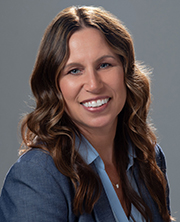YOUNGSTOWN, Ohio – Approaches to moving a business beyond its current ownership are as varied as the businesses themselves, according to professionals who work with local business owners.

Baby boomer business owners have reached the age when they think about how to succeed in succession. And they can’t begin to plan early enough, Tracie Stephens says.
Stephens is managing principal of Schroedel, Scullin & Bestic LLC, Canfield. She speculates perhaps half of business owners are baby boomers and “at that age” they’re looking to sell their businesses.
“We’re always trying to get them to think sooner,” she says. “But it’s hard to do when you’re in the thick of it.”
Many business owners are becoming more concerned about next steps, says Tim Petrey, managing partner of HD Davis CPAs in Liberty Township. Perhaps the biggest challenge in succession planning is the “big change” it represents.
“You’ve spent your entire life, your career, building your business,” he says. “Now you’ve got to change your mindset to thinking about exiting and retirement.”

Petrey calls it an “overwhelming conversation with people because there’s so much emotion involved.”
More people are focusing on succession planning now than previously, he says, but they are “just confused about where to start.”
“Usually we see a business owner looking to sell to other partners or family members,” Stephens says. “When that’s the case, it’s good because there’s already someone who’s involved who they know and trust and they can feel good about.”
In other cases, the business owner is looking to sell to a private equity firm that will be able to purchase the business outright rather than require him to hold a note. The private equity firm will have the capital to invest, she continues. Sometimes the owner remains with the succeeding entity if both parties agree.
One business Stephens works with is looking into what she describes as a “strategic acquirer” in the same industry. “They already know the industry,” she says.

“Always the key is to make the business survive because that’s the thing that generates the wealth for the family,” says Nils P. Johnson, an attorney with Johnson & Johnson in Canfield.
One business that Johnson recently worked with involved the owner’s children who had distinct skill sets.
One was “kind of a bean counter child,” as Johnson puts it; another excelled at sales and another had similar people skills but also was “more of an entrepreneur,” he says.
“Salespeople run the earth,” he adds. “Sometimes you have to accord that a bigger piece of the pie.”
In the case of a family-owned business, a patriarch or matriarch might know everything about the business – from how to make the products to how to sell them – but hasn’t taken the time to document those processes so they can be handed off.
“The family business conversation is generally the most difficult because there are a lot of nonfinancial factors that people don’t think about, such as, ‘Do my kids even want this business? Are my kids capable of taking over this business?’ ” Petrey says.
“It’s always hard to figure out the family dynamics,” Johnson says. “So, a lot of times when you’re doing an estate plan, you need to either go on a family retreat [or have dinner or drinks with family members] so they will loosen up and you can understand what’s going on.”
In some instances, the entire family is involved in the operation, including the mother.
“Oftentimes, the woman is the one who poured oil on the water of the relationships and kept everybody working together,” Johnson says. “If you lose Mom, sometimes it’s tough because there’s nobody to leaven the bread, so to speak.”
The dynamic differs when the business isn’t family-owned because there is less emotional attachment, but it’s challenging in its own right.
“We try to encourage our clients, you’ve got to start as soon as possible,” he says. “You always have to have that in mind with how you’re building your business. Otherwise, if you don’t start with that in mind or make that part of your plan early on, then it gets more challenging the closer to the finish line you are. The later you wait, the less leverage you have when you’re trying to determine what the business is worth and how to most appropriately communicate its value and assess its value.”
Other factors in business succession include to whom the business might be sold and what needs to be assembled to determine its value.
In some cases, the entrepreneur who launched the enterprise delays having key conversations with the succeeding generation. “So the children will move on to pursue other opportunities out of town or out of state,” Johnson says.
“You need to establish a guide path so that people know what’s happening and they feel secure, and are incentivized,” he says.
One of Johnson’s clients is a business operated by a pair of patriarchs, both of whom he describes as “beyond normal retirement age [and with] big, robust families,” who are revisiting an estate plan that specified only children who were active in the business could inherit from them.
That plan was complicated when the children married and moved out of town or, in one instance, when someone who had been active in the business for several years developed a health issue. “So now what do you do?” Johnson asks.
“There really is no one-size-fits-all,” Stephens says.
One of her clients is looking to do an ESOP, an employee stock ownership plan, which is “not very common anymore,” she says.
An ESOP offers significant benefits with preferential tax treatment on contributions and distributions.
The biggest challenge Petrey sees is the lack of young entrepreneurs available – or willing – to take over businesses. In the early 2000s, many young people starting their careers left the Mahoning Valley to find opportunities elsewhere.
“It’s a numbers game in terms of our population,” he says. “Now the challenge is to illustrate to those folks the opportunity that is here.”
In addition, borrowing is getting more expensive and getting a loan will remain a challenge until the economy settles, the experts agree.
Another factor Petrey points to is the millennials (and younger people) resetting their priorities about work-life balance. COVID-19 brought this to the forefront.
“Many of these businesses were not necessarily built on the priorities of the next generation,” he says.
There also is uncertainty about the direction the area economy will take – whether it will “continue on this path to resurgence [or] not pan out as hoped for.”
